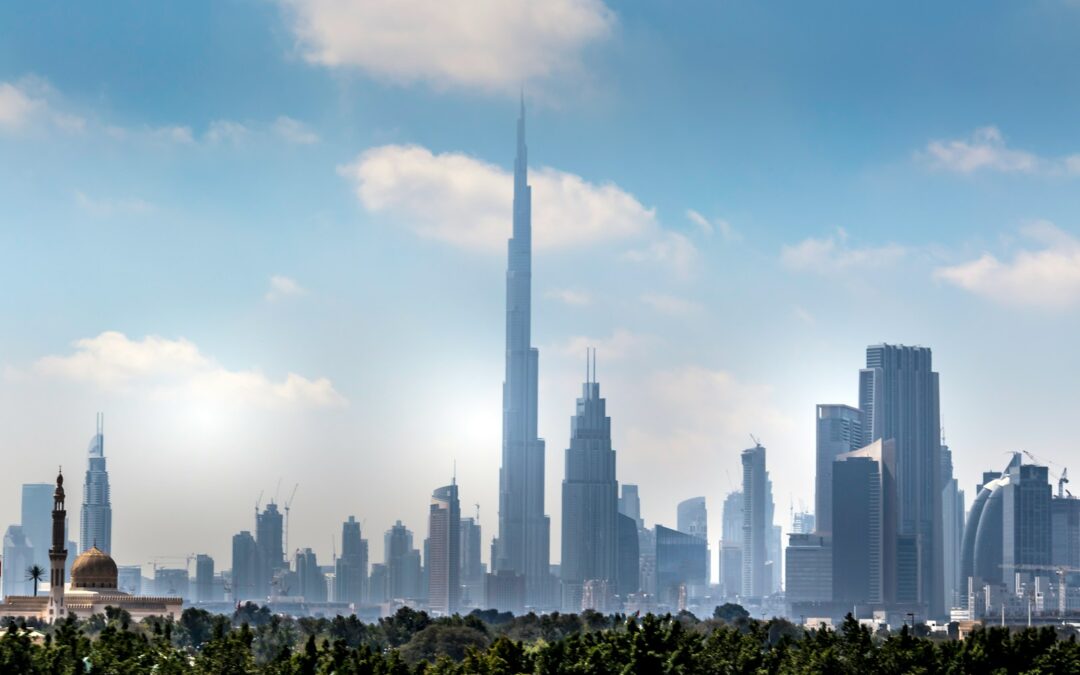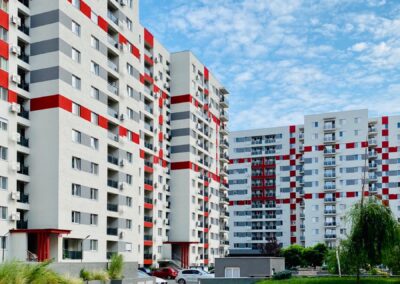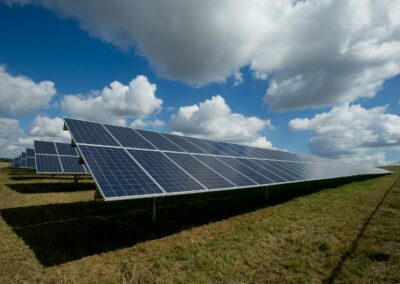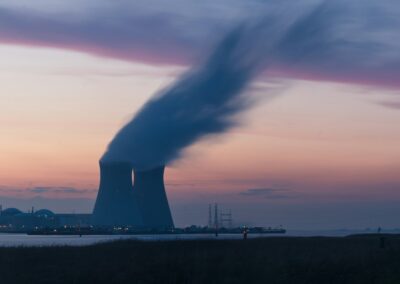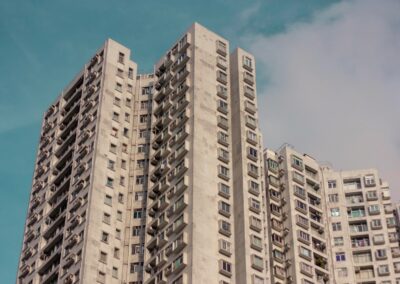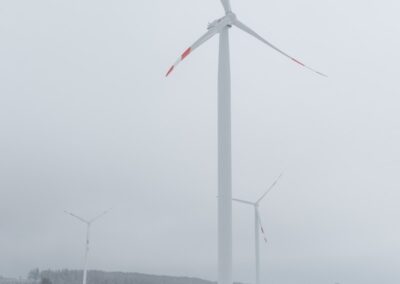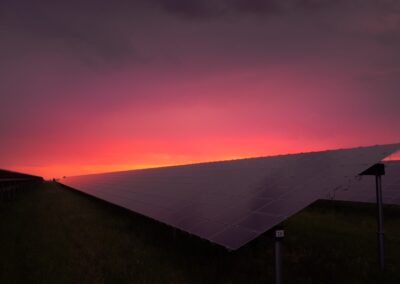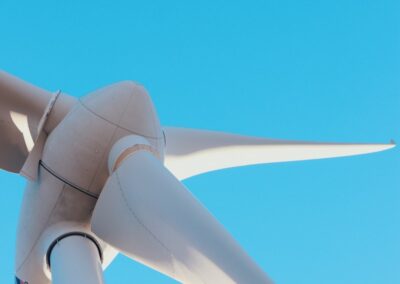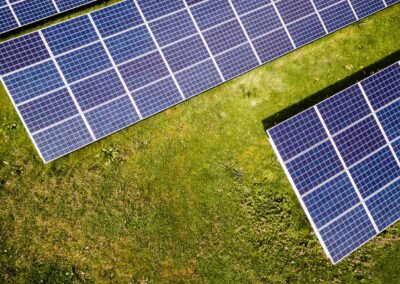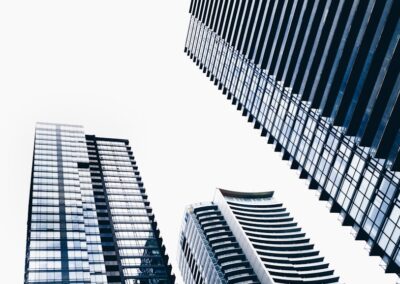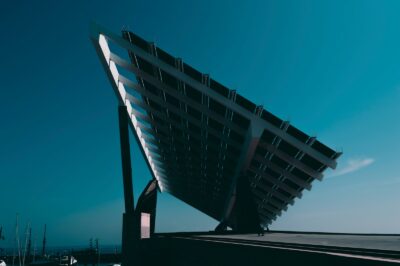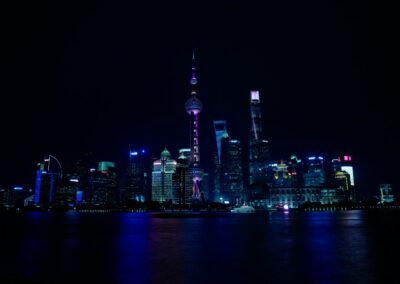The Impact of Design and Technology on Energy Efficiency
Understanding the Role of Occupant Behavior in Energy Performance
The occupant behavior and energy performance in high-rise buildings are crucial factors in achieving sustainability goals in urban environments. As cities like Riyadh and Dubai continue to expand vertically, the efficiency of these towering structures becomes increasingly important. High-rise buildings consume significant amounts of energy for heating, cooling, lighting, and other operational needs, making it essential to optimize their energy performance.
Occupant behavior plays a pivotal role in the overall energy consumption of high-rise buildings. Actions such as adjusting thermostats, turning off lights, and using energy-efficient appliances can significantly reduce energy usage. However, occupants often lack awareness or motivation to engage in energy-saving practices. This gap can be bridged by integrating smart technologies and design strategies that promote sustainable behaviors.
For instance, implementing smart building systems that provide real-time feedback on energy consumption can encourage occupants to make more informed decisions about their energy use. In regions like Saudi Arabia and the UAE, where energy consumption is high due to extreme temperatures, these technologies can lead to substantial energy savings. Smart meters, energy management apps, and automated controls can make energy-saving practices more accessible and convenient for building occupants.
Furthermore, the design of high-rise buildings can significantly influence occupant behavior. Building features such as large windows for natural lighting, efficient HVAC systems, and user-friendly controls can make it easier for occupants to adopt sustainable practices. In cities like Riyadh and Dubai, where modern architectural designs are prevalent, incorporating these features can enhance the energy performance of high-rise buildings.
Design Strategies to Encourage Sustainable Practices
Effective design strategies to encourage sustainable practices are essential for optimizing the energy performance of high-rise buildings. Architects and engineers must consider how the layout, materials, and technologies used in a building can promote energy-efficient behaviors among occupants.
One critical design strategy is to maximize natural lighting. Incorporating large windows, skylights, and reflective surfaces can reduce the need for artificial lighting during the day. This not only lowers energy consumption but also improves the well-being and productivity of occupants. In regions like Riyadh and Dubai, where sunlight is abundant, leveraging natural lighting can lead to significant energy savings.
Another effective strategy is to implement advanced HVAC systems that allow for individual climate control. Traditional HVAC systems often provide uniform heating and cooling, leading to energy waste. In contrast, modern systems equipped with smart thermostats and sensors can adjust the temperature based on occupancy and usage patterns. This ensures that energy is only used when and where it is needed. In the extreme climates of Saudi Arabia and the UAE, such systems can enhance comfort while minimizing energy use.
The integration of renewable energy sources is also a vital design strategy. Solar panels, wind turbines, and geothermal systems can provide clean, renewable energy to high-rise buildings, reducing their reliance on fossil fuels. In sunny regions like Riyadh and Dubai, solar energy is particularly viable and can significantly contribute to a building’s energy needs. Designing buildings to accommodate renewable energy systems from the outset ensures that they are integrated seamlessly and efficiently.
Leveraging Technology for Sustainable Building Management
Modern technology plays a critical role in managing the energy performance of high-rise buildings. Advanced technologies such as artificial intelligence (AI), blockchain, and the Internet of Things (IoT) can enhance building management systems and promote sustainable practices.
AI-powered energy management systems can analyze vast amounts of data to optimize energy usage. These systems can predict energy demand, identify inefficiencies, and suggest corrective actions. For example, AI can adjust lighting and HVAC settings based on occupancy patterns and weather forecasts, ensuring optimal energy use. In tech-forward cities like Riyadh and Dubai, leveraging AI for building management can drive significant energy savings and sustainability.
Blockchain technology offers transparency and security in energy transactions. It can be used to track energy consumption, manage decentralized energy grids, and facilitate peer-to-peer energy trading. This ensures that energy sources are used efficiently and sustainably. In the context of high-rise buildings, blockchain can provide occupants with a transparent view of their energy consumption and its sources, promoting accountability and sustainable behavior.
The IoT connects various building systems and devices, allowing for seamless communication and coordination. Smart sensors can monitor energy use, detect occupancy, and control systems in real-time. This connectivity enables automated adjustments that enhance energy efficiency. For instance, IoT devices can turn off lights and adjust temperatures in unoccupied rooms, reducing unnecessary energy consumption. In innovative cities like Riyadh and Dubai, the IoT can transform high-rise buildings into smart, energy-efficient structures.
Leadership and Management Skills for Sustainable Building Operations
Effective leadership and management are crucial for promoting sustainable practices in high-rise buildings. Business executives, mid-level managers, and entrepreneurs must prioritize sustainability within their organizations and develop strategies to engage occupants in energy-saving behaviors.
Leadership involves setting clear sustainability goals and communicating their importance to all stakeholders. Managers should provide training and resources to help occupants understand how their actions impact energy performance. This includes workshops, informational materials, and incentives for energy-efficient behaviors. In regions like Saudi Arabia and the UAE, where sustainability is a key focus, strong leadership can drive the adoption of sustainable practices in high-rise buildings.
Project management skills are essential for implementing and maintaining sustainable building systems. Managers must oversee the integration of smart technologies, renewable energy sources, and efficient design features. This involves coordinating with architects, engineers, and technology providers to ensure that sustainability goals are met. In rapidly developing cities like Riyadh and Dubai, effective project management can ensure that high-rise buildings are designed and operated sustainably.
Collaboration and stakeholder engagement are also critical components of effective leadership. Business leaders must work closely with government agencies, industry organizations, and community groups to promote sustainable building practices. This involves participating in sustainability initiatives, sharing best practices, and advocating for policies that support energy-efficient buildings. In regions like Riyadh and Dubai, fostering partnerships can enhance the impact of sustainability efforts and drive widespread adoption of energy-saving practices.
Conclusion: Building a Sustainable Future with High-Rise Buildings
The occupant behavior and energy performance in high-rise buildings are integral to achieving sustainability in urban environments. By understanding the impact of occupant behavior and implementing effective design strategies, cities like Riyadh and Dubai can enhance the energy performance of their high-rise buildings.
Modern technology, including AI, blockchain, and the IoT, offers powerful tools for managing energy use and promoting sustainable practices. Effective leadership and management are essential for integrating these technologies and fostering a culture of sustainability within organizations. As we move towards a more sustainable future, prioritizing energy efficiency and occupant engagement in high-rise buildings will be crucial for reducing environmental impact and achieving long-term sustainability goals.
By leveraging innovative technologies, design strategies, and effective management practices, business leaders can create high-rise buildings that not only meet the demands of modern urban life but also contribute to a sustainable and resilient future. In dynamic cities like Riyadh and Dubai, the adoption of sustainable practices in high-rise buildings stands as a testament to the potential of urban innovation and responsible development.
—
#OccupantBehavior #EnergyPerformance #HighRiseBuildings #SustainablePractices #BuildingDesign #ModernTechnology #ArtificialIntelligence #SmartBuildings #SaudiArabia #UAE #Riyadh #Dubai #BusinessSuccess #Leadership #ManagementSkills #ProjectManagement

